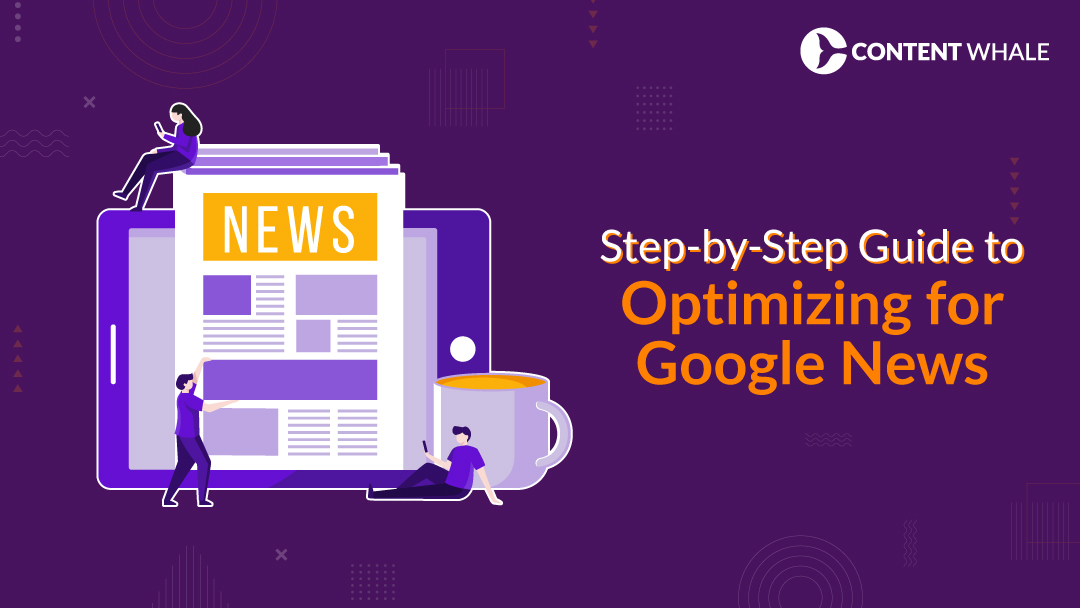Data is essential for effective content marketing. Google Analytics offers deep insights into website performance, making it easier to refine strategies. This blog focuses on how to use Google Analytics for content marketing to maximize your results.
Google Analytics is a powerful tool that helps marketers understand how their content performs. It tracks visitor behaviour, engagement, and conversions. By analyzing this data, you can make informed decisions to improve your content strategy.
Using content marketing analytics enables data-driven strategies. You’ll create more engaging content, target the right audience, and achieve better outcomes. This guide will show you how to use Google Analytics for a website to boost your content marketing efforts. We’ll cover setup, key metrics, content strategy development, tool integration, and success stories. Let’s dive in to unlock the full potential of Google Analytics 4.
Understanding Google Analytics
1. Definition and Purpose
Google Analytics is a free tool that tracks and reports website traffic. It helps marketers understand user behaviour and measure campaign performance. Using Google Analytics for content marketing provides insights into how your content performs and how users interact with it.
2. Key Features and Tools
Google Analytics offers several key features:
- Real-time data: Monitor user activity as it happens.
- Audience insights: Understand your audience’s demographics, interests, and behaviour.
- Traffic source analysis: Identify where your visitors are coming from.
These features help you make informed decisions to enhance your content strategy. By analyzing this data, you can adjust your content to meet your audience’s needs better.
3. Overview of Google Analytics 4
Google Analytics 4 (GA4) is the latest version of Google Analytics. GA4 focuses on event-based data instead of session-based data. This approach provides a more detailed understanding of user interactions. GA4 also offers AI-driven insights and improved tracking capabilities.
Learning how to use Google Analytics 4 is essential for modern marketers. Its advanced features allow for deeper insights and more accurate data. By leveraging GA4, you can refine your content marketing analytics and achieve better results.
Setting Up Google Analytics for Your Website
To start using Google Analytics for content marketing, create an account and set up a property for your website. Follow these steps:
1. Sign in to Google Analytics and create an account.
2. Add a property for your website and set up a data stream.
3. Install the tracking code on your website. This involves adding a JavaScript snippet to your site’s header.
4. Configure basic settings, such as setting up goals and linking Google Analytics with Google Search Console.
After installing the tracking code, verify that data is being collected. Check the Real-Time report to ensure it shows activity from your website.
Next, configure key settings for content marketing analytics:
1. Set up goals to track conversions, such as form submissions or purchases.
2. Enable site search tracking to understand what visitors are looking for on your website.
3. Link Google Analytics with other Google tools like Google Ads and Google Search Console.
Understanding how to use Google Analytics for a website is vital for gathering accurate data. This setup will enable you to leverage Google Analytics for marketing and gain insights to refine your content strategies. Proper configuration ensures you get the most out of Google Analytics 4.
Key Metrics to Track for Content Marketing
Tracking the right metrics is essential for content marketing analytics. These key metrics provide insights into your content’s performance and audience engagement.
1. Pageviews and Unique Visitors
Pageviews represent the total number of times a page is viewed, while unique visitors count the distinct users who visit your content. High pageviews indicate popular content, but tracking unique visitors helps you understand the actual reach. Regularly monitor these metrics to gauge the success of your content and identify which topics resonate most with your audience.
2. Average Session Duration
Average session duration measures how long users stay on your site. Longer durations suggest that visitors find your content engaging and valuable. To improve this metric, ensure your content is relevant, well-structured, and includes internal links to keep users on your site longer. Regularly review and update content to maintain interest and engagement.
3. Bounce Rate
Bounce rate is the percentage of visitors who leave your site after viewing only one page. A high bounce rate can indicate that your content isn’t meeting user expectations. To reduce bounce rates, improve page load times, enhance mobile usability, and ensure your content matches the search intent of your audience. Use engaging visuals and clear calls to action to keep users exploring your site.
4. Traffic Sources
Understanding traffic sources is vital for effective content marketing. Traffic can come from organic searches, social media, referrals, direct visits, and paid campaigns. Analyzing these sources helps you identify which channels are most effective in driving traffic. Focus on optimizing high-performing channels and explore opportunities to improve underperforming ones.
5. Conversion Rate
Conversion rate tracks the percentage of visitors who complete a desired action, such as signing up for a newsletter or making a purchase. This metric is crucial for assessing the effectiveness of your content in driving conversions. Optimize your calls to action, ensure your forms are user-friendly, and use persuasive content to improve conversion rates.
Using these metrics, you can refine your content strategy. For example, if certain pages have high bounce rates, you may need to improve content quality or relevancy.
Google Analytics 4 provides enhanced tracking and insights, making it easier to analyze these metrics. Using Google Analytics for a website gives you a comprehensive view of your content’s performance. This data-driven approach is vital for successful content marketing.
How to Use Google Analytics to Develop Content Strategies
To optimize your content strategy, leverage Google Analytics for content marketing. Here are key steps to follow:
1. Identifying Top-Performing Content
Use the Behavior > Site Content > All Pages report. This report shows which pages have the most traffic and engagement. By identifying top-performing content, you can understand what resonates with your audience. To boost engagement, focus on creating more content like your top performers.
2. Analyzing Audience Demographics and Behavior
Check the Audience reports to understand who your visitors are and how they interact with your content. Demographic insights, such as age, gender, and location, help tailor your content to your audience. Behaviour reports show how users navigate your site, revealing content preferences and patterns.
3. Setting Goals and KPIs
Define clear objectives and key performance indicators (KPIs) to track your content’s success. Goals can include metrics like page views, session duration, or conversion rates. Use these KPIs to measure progress and adjust strategies as needed.
4. Identifying Content Gaps and Opportunities
Identify underperforming content by analyzing low-traffic or high-bounce-rate pages. Filling these content gaps can better meet audience needs and improve site performance. Use Google Analytics 4 to discover new opportunities for content topics based on user interests and search behaviour.
5. A/B Testing for Headlines and Content Formats
Test different versions of your content to see which ones resonate best with your audience. A/B testing can include variations in headlines, images, or content formats. Use the Experiments feature in Google Analytics to set up and track these tests.
6. Adjusting Content Based on User Feedback and Behavior
Continuously refine your content based on analytics data and user feedback. Monitor metrics like average session duration and bounce rate to identify areas for improvement. Make adjustments to enhance engagement and performance.
Content marketing analytics are essential for creating effective strategies. Understanding how to use Google Analytics for marketing can help you make data-driven decisions. Using Google Analytics for a website helps you stay informed about your audience’s preferences. Google Analytics 4 offers advanced features to enhance your content strategy further. Implement these practices to create compelling content that drives results.
Integrating Google Analytics with Other Tools
Integrating Google Analytics with other tools enhances your content marketing analytics. Here are key integrations to consider:
- Google Search Console: Link Google Analytics with Google Search Console. This will provide insights into search performance and help improve SEO.
- Google Data Studio: Use Google Data Studio to create customized reports and visualizations. This makes it easier to analyze and present your data.
- Third-Party Content Management Systems: Integrate Google Analytics for a website with platforms like WordPress. This allows seamless data collection and analysis.
Understanding how to use Google Analytics for marketing involves leveraging these integrations. They help you gain deeper insights and make informed decisions.
Google Analytics 4 supports these integrations, offering enhanced capabilities. By using these tools together, you can optimize your content strategies and achieve better results. This approach ensures you get the most out of your content marketing analytics.
Case Studies: Success Stories of Content Marketing Using Google Analytics
Real-world case studies highlight the effectiveness of Google Analytics for content marketing. Here are a few examples that showcase how different companies leveraged Google Analytics to boost their content strategies:
1. Marketo
Marketo, a leader in marketing automation, aimed to improve its conversion rate. It combined data on website visitors’ characteristics with Google Analytics, including demographic and behaviour data, which helped create detailed audience segments. By targeting these segments effectively, its remarketing campaigns saw a 10x improvement in conversion rates.
2. Fairmont Hotels
Fairmont Hotels used Google Analytics to track and understand the quality of traffic from social media, particularly Twitter. They implemented a URL builder to track referral sources accurately. This provided better insights into social media traffic, allowing them to refine their social media strategy.
3. Watchfinder
Watchfinder, a UK-based retailer of pre-owned watches, faced long purchase decision cycles. Based on user behaviour and purchase funnel stages, they created 20 remarketing lists. By targeting these lists, Watchfinder achieved a remarkable 1300% ROI, significantly reducing the purchase decision time.
4. Top Tarif
Top Tarif, a German price comparison website, aimed to increase conversions without raising costs. To this end, it fine-tuned its remarketing approach by creating granular lists based on user behaviour. This strategy resulted in a 130% increase in conversions and a 31.5% improvement in the conversion rate.
5. MarketLytics Client
A MarketLytics client struggled with user behaviour analysis and content efficiency. MarketLytics audited their Google Analytics setup and made key improvements, such as implementing Google Tag Manager for tracking micro conversions. They also set up sequential segments to measure user behaviour across blog pages, leading to better insights and optimized content strategies.
These case studies demonstrate the powerful impact of Google Analytics on content marketing. By understanding how to use Google Analytics for content marketing, businesses can gain deep insights, refine their strategies, and achieve significant improvements in engagement and conversions.
Using Google Analytics for content marketing is essential for optimizing strategies and achieving better results. It helps track key metrics and provides data-driven insights.
By understanding how to use Google Analytics for a website, you can continuously refine your content based on performance data. This approach ensures your content stays relevant and effective.
Implementing content marketing analytics allows you to target the right audience and create engaging content. Use Google Analytics 4 to gain deeper insights and enhance your marketing efforts.
Embrace the power of Google Analytics to drive growth in marketing. Regularly analyze and adjust your strategies for ongoing improvement. Start leveraging these tools today to optimize your content marketing.
What is the difference between Google Analytics and Google Analytics 4?
Google Analytics 4 offers enhanced tracking, AI-driven insights, and a focus on event-based data, providing a more detailed understanding of user interactions compared to the previous version.
How can I track the performance of individual blog posts?
Use the Behavior > Site Content > All Pages report. This will show detailed metrics for each blog post, including pageviews, average time on page, and bounce rate.
What are the best practices for setting up conversion goals in Google Analytics?
Define clear goals aligned with your business objectives. Use the Admin > Goals section to set up and configure these goals. Track actions like form submissions or purchases to measure success.
How often should I review my Google Analytics data?
Review your data weekly to track progress and make timely adjustments. Monthly deep dives help identify long-term trends and opportunities.
Can Google Analytics help in identifying content topics?
Yes, analyzing search terms, user behaviour, and content performance can reveal popular topics and content gaps. This guides your future content creation efforts and improves engagement.





